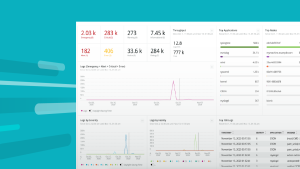
When deploying applications in the cloud, linking your application performance and availability to cloud resources is vital so you can get the right insights quickly. It helps you find and fix issues, discover and implement cloud cost savings, and make data-driven architecture decisions.
To aid you in setting up New Relic cloud integrations, we recently added an integration with Terraform. In the past, setting up these integrations could be lengthy because you needed to gather the right credentials, set up the cloud provider, and configure New Relic to retrieve the data.
Now, you can simply use our integration with Terraform. Terraform is an automation solution that will allow you to configure New Relic and hundreds of other service providers, including Amazon Web Services (AWS), Microsoft Azure, and Google Cloud Platform (GCP) quickly with a little code. Define what you want in HCL, the Terraform scripting language, and Terraform will apply your desired configuration through the New Relic APIs. You can also scale, change, and delete the configuration in minutes. This should allow you to scale your observability more quickly, change cloud configurations more rapidly, and fine-tune your setup without the overhead of manual operations.
To get started with Terraform, try it out for yourself with this tutorial on our developer website or this video.
Within the New Relic Terraform provider, there are multiple Terraform resources to set up and configure the New Relic cloud integrations. Because each cloud provider is different, we’ve presented examples so you can easily re-use to automate the configuration.
You can find the examples and configuration steps on the Terraform documentation site.
If you experience problems or have questions, feel free to reach out in our Explorers Hub or in this repository.
Next steps
- Set up observability with this guide. As part of our observational maturity series, this article covers automating your observability configuration and shows how you can drive value through a series of follow-along steps.
- Want more New Relic engineering tips? Check out our Data Bytes Youtube channel for more content.
The views expressed on this blog are those of the author and do not necessarily reflect the views of New Relic. Any solutions offered by the author are environment-specific and not part of the commercial solutions or support offered by New Relic. Please join us exclusively at the Explorers Hub (discuss.newrelic.com) for questions and support related to this blog post. This blog may contain links to content on third-party sites. By providing such links, New Relic does not adopt, guarantee, approve or endorse the information, views or products available on such sites.



